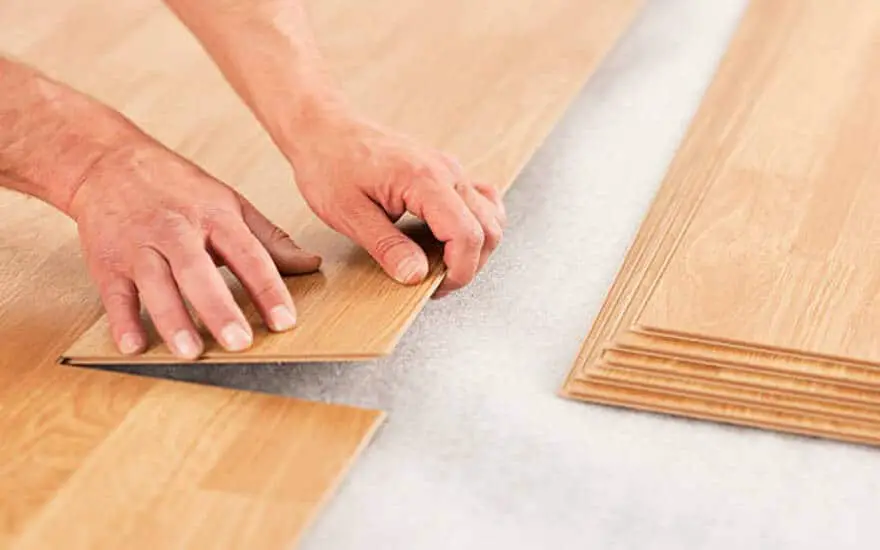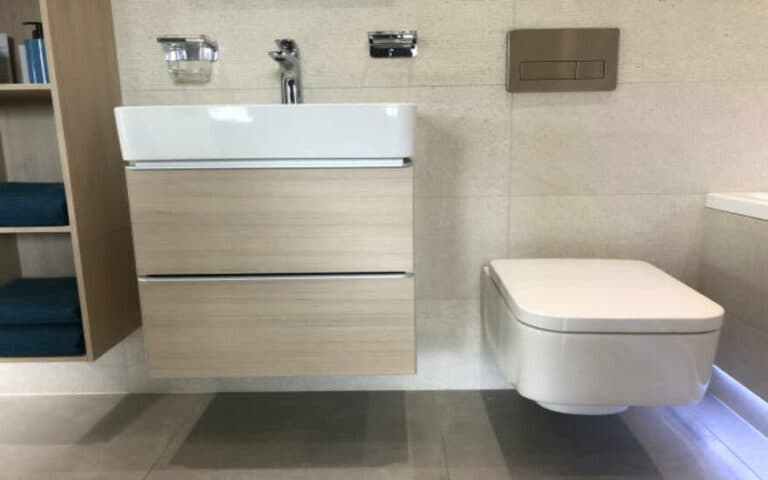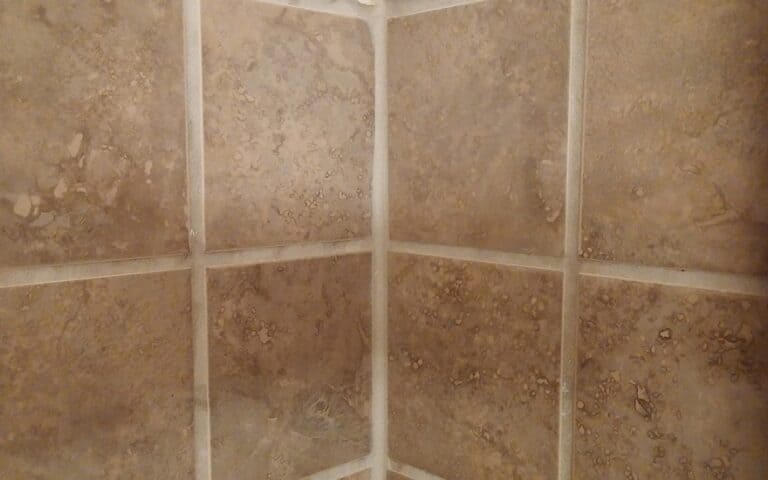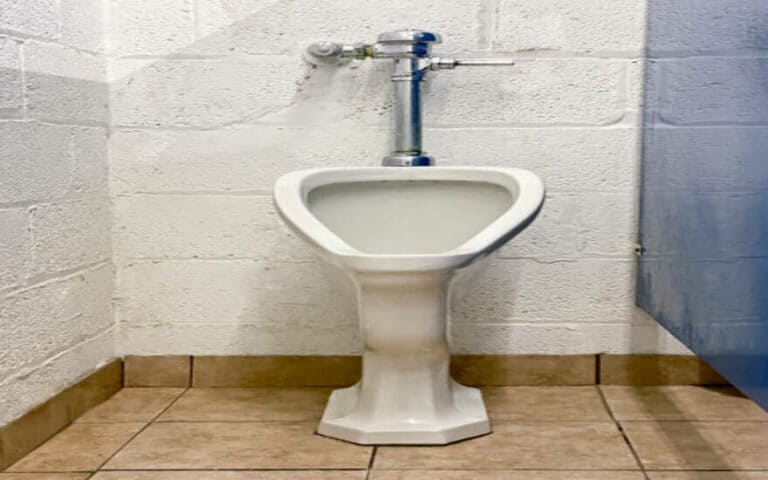You may be wondering if you need to glue down your laminate flooring or if it is possible to float it. If this sounds like you, then this blog post is for you! I’ll walk through the pros and cons of gluing down laminate flooring and provide some tips on installation.

Does Laminate Flooring Need Glue?
No, it would be best not to glue your laminate to the subfloor. Most laminates are floating floors and should be able to expand and contract naturally without adhesive. Many laminate flooring planks are glueless, which means that the planks don’t require any adhesive for attachment. Instead, the planks provide built-in interlocking mechanisms that hold them in place.
7 Benefits of Glueless Laminate Flooring
Glueless laminate flooring has many benefits, making it the ideal choice for many homeowners. It is easier to install and has several other advantages that make it the best option for many people. Here are some of the top benefits of glueless laminate flooring:
1. Easy Installation
Installing glueless laminate flooring is a breeze. Thanks to the easy-to-use interlocking system, you can quickly and easily get your new flooring up and running. With no glue, you don’t need to worry about mixing adhesives or waiting for them to dry.
And since there’s no mess, you can install your flooring in no time. You don’t need special knowledge or tools to install your new glueless laminate flooring.
2. Cost Savings
Glueless laminate flooring is a great choice for anyone looking to save money on installation. The most amazing part about laminate floorings is their cost. They are considerably more cost-effective than hardwood flooring.
They can even pull together a room without breaking the bank. The thickness of the wear layer, the type of core material, and the design or pattern of the laminate influences the differences in pricing. It’s worth researching and ensuring you’re getting the best deal possible when selecting your laminate flooring.
3. Flexibility of Design
Another benefit of glueless laminate flooring is its flexibility in design. Laminates can be used to create a variety of looks, from classic hardwood to a more modern stone or tile look. You can also find some vinyl flooring that is way cheaper than laminate, but you won’t get the same level of design options that you do with laminate.
With laminate, you can create patterns and designs that will give your room a unique and stylish look that you won’t get with any other flooring option.
4. No Messy Glue
One of the great advantages of glueless laminate flooring is that it doesn’t require messy glue for installation. Unlike glue-down floors, glueless laminate flooring requires no adhesive to hold it down. The installation process is far easier and less time-consuming than with a glued-down floor. Plus, there’s no need to worry about the time and effort associated with mixing and spreading glue!
5. Eliminates Subfloor Preparation
Unlike glued laminate flooring, glueless flooring eliminates the need for subfloor preparation. As a result, you don’t need to remove old floor coverings or adhesives, which can be time-consuming and costly. Instead, all you need to do is make sure the subfloor is clean and level before installing your glueless laminate flooring.
6. No Off-Gassing
Laminate flooring is a great option for those looking to reduce their formaldehyde exposure. Laminate flooring often comes with low levels of formaldehyde emissions, and the glueless installation eliminates the need for additional adhesive, reducing the risk of off-gassing even further. This is better for your health and allows you to enjoy a beautiful and durable floor without worrying about unpleasant odors or harmful chemicals.
7. Accommodates Minor Subfloor Irregularities
Another benefit of glueless laminate flooring is that it can accommodate minor subfloor irregularities. Unlike glue-down flooring, which must be installed on a perfectly smooth, flat surface, glueless laminate flooring can be installed over minor bumps and imperfections in the subfloor.
This means you don’t have to worry about the time and expense of preparing the subfloor for installation. This also makes it an ideal choice for DIYers who don’t have experience leveling a subfloor. The flexible installation also means it’s easier to move the laminate planks around to find the ideal fit.
4 Disadvantages of Glued Laminate Flooring
Although gluing down laminate flooring has some advantages, there are also some drawbacks. The toxic adhesives that glue down the laminate can be a health hazard if not properly ventilated. Additionally, if any repairs need to be made, it can be much more difficult.
Furthermore, the installation process takes more time than a glueless laminate installation. And finally, due to the glue, moisture can become trapped underneath the planks and cause damage over time.
1. Toxic Adhesives
Glue-down floors are better for rooms with heavy loads and foot traffic because they’re more stable. However, there are some significant risks associated with flooring adhesives. Most flooring adhesives contain hazardous chemicals like formaldehyde, which can harm humans.
Furthermore, installing a glued laminate floor is much more time-consuming than a floating floor. Therefore, it is important to weigh the pros and cons of both glueless laminate and glued laminate flooring before making your decision.
2. Difficult to Repair
Fortunately, glueless laminate flooring eliminates this issue. Since laminate planks don’t require glue, they can be removed and replaced individually if necessary. This makes repairs simpler and more cost-effective since you don’t have to replace the entire floor or use expensive adhesives.
Plus, glueless laminate is much easier to install in the first place, so you don’t have to worry about paying for extra installation costs or dealing with messy glue.
3. Increased Installation Time
When it comes to installation time, glueless laminate flooring is a much faster process than glued laminate flooring. Glueless laminate flooring can be installed in a fraction of the time it takes to install glued laminate flooring.
Installers don’t need to wait for glue and other adhesives to set. This means you can enjoy your new laminate flooring much faster than if you had chosen a glued laminate flooring option! Furthermore, glueless laminate flooring is much easier to install than glued flooring, making the installation process much faster and easier for professional installers.
4. Risk of Moisture Damage
When it comes to laminate flooring, the risk of moisture damage is a major factor. Solid wood flooring will warp and swell when water-logged, while laminate can delaminate when exposed to too much moisture.
Glue-down floors are better for rooms with heavy loads and foot traffic because they’re more stable and susceptible to liquid damage. With glueless laminate flooring, you can avoid the risk of moisture damage by eliminating the need for adhesives.
Summary
In conclusion, when it comes to laminate flooring, you can either glue it down or leave it floating. Whether you choose to glue or float your laminate flooring depends on your specific needs, budget and preferences. Glueless laminate flooring offers an easy installation process with cost savings and no need for messy adhesives or off-gassing.
Floating is a great option for those who don’t want to deal with subfloor preparation or repairs. However, gluing down the laminate might be the better option if you’re looking for a more secure installation. Before making your final decision, be sure to research and understand each installation method’s pros and cons.






